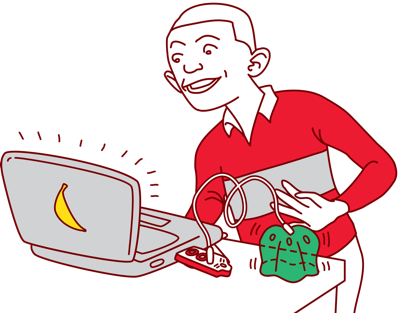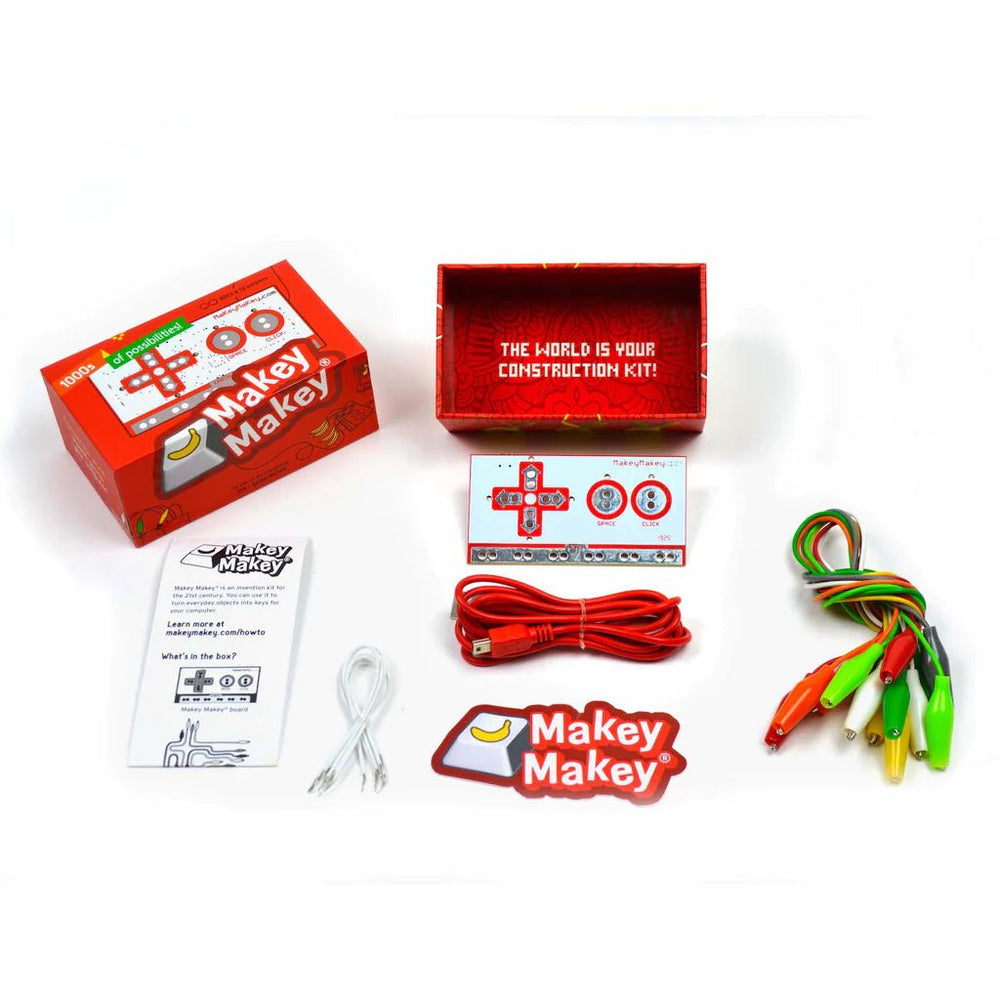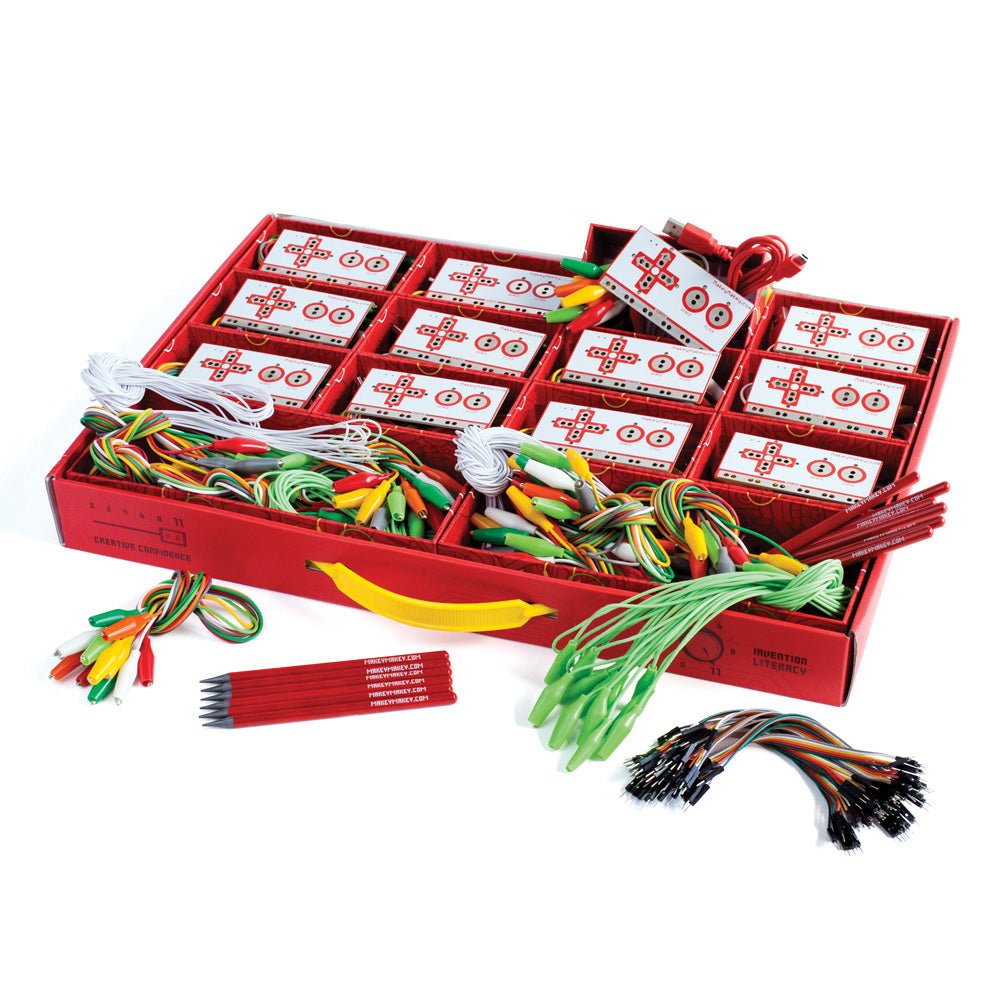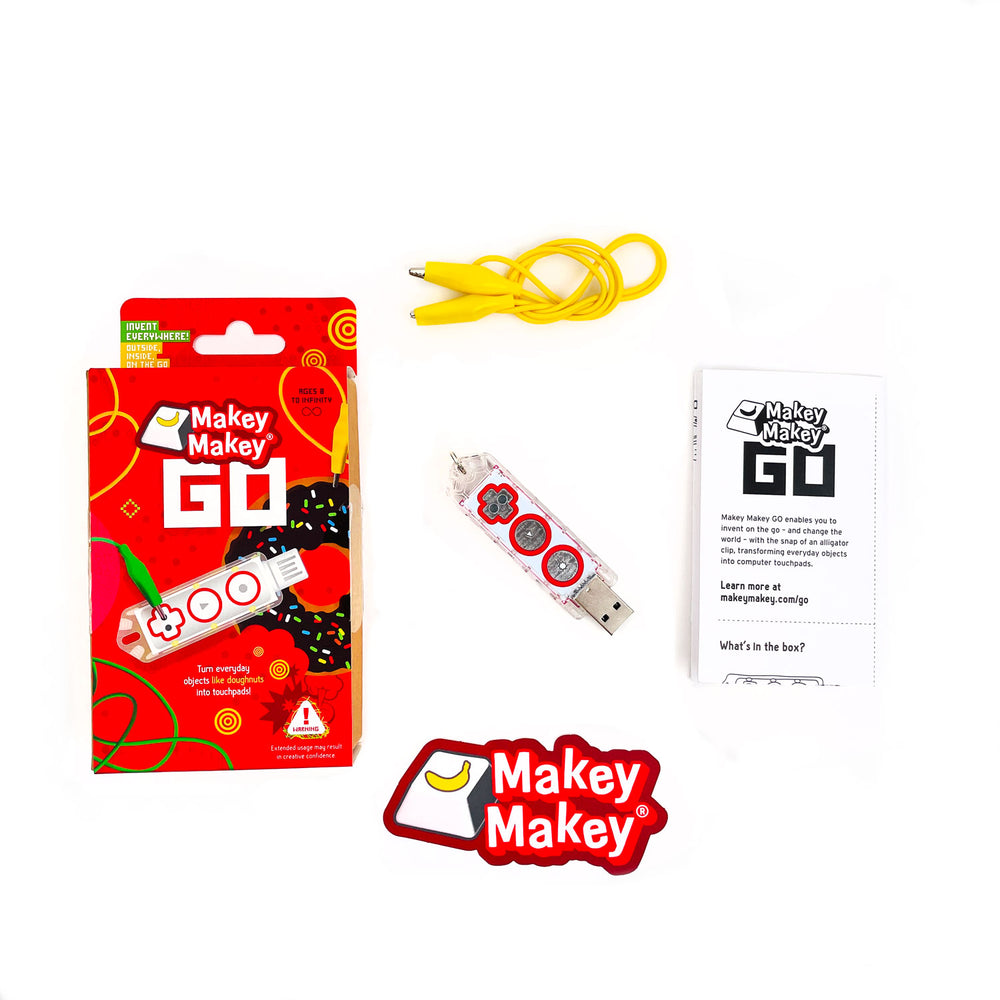Featured Educator: Chris Ippolito and his Digital Orchestra and Global Arcade
Featured Educator Series
Meet this month's featured educator: Chris Ippolito

This month's featured educator is Chris Ippolito a maker educator at the Marian Baker School. He shared these amazing videos of his students and their "Digital Orchestra" project in our Facebook Educator group and we just had to learn more about the process! (Also, check out his Youtube Channel and Twitter!)

Tell us a little about yourself?
I have been teaching for 14 years and I love what I do. I know that students thrive in situations where the learning is hands-on and applicable to real-world scenarios, with a focus on creative problem solving and teamwork (not to mention competition). I have an affinity for everything that resides in the intersection of Technology and the Arts. I am eternally curious and always looking for ways to spark creativity and passion in my students, whether they are children, young adults or working professionals.
I have received extensive training in Robotics and other technologies through Carnegie Mellon University and Rochester Institute of Technology. I believe that it is imperative to view STEAM (Science, Technology, Engineering, Arts and Math) education as vital to student (and teacher) success.
In my free time (whenever that happens), I love being with my family, reading, making music, watching movies, traveling, hiking, eating gallo pinto, fostering dogs and building LEGOs and other STEAM-based creations with my son.
Tell us a bit about your school.
I teach at the Marian Baker School in Costa Rica’s central valley. We moved here last year from New Jersey and it’s been an incredible experience. Our school is a small, private school that follows an American curriculum and calendar. We have approximately 200 students in Pre-K through 12th grade.
What is your role on campus?
I am the school’s Technology Coordinator and Makerspace teacher. I also teach an elective class called Coding & Robotics. In my teaching capacity, I instruct students in grades 1-10.
We really love the variety of projects your students created for the Digital Orchestra Project and Arcade Event. What was the challenge or instructions you presented to the students for these projects?
When I first started using Makey Makeys years ago in my Makerspace classes, I immediately saw the potential for students to use it as a creative bridge between art, design and technology. One of the first projects I designed was the arcade project. Last year, I ran this project here at MBS and branded it the “Wildcat Global Arcade.” The wildcat is our mascot and the arcade is “global” in that students had to design a classic arcade-style game based on one of the 17 UN Global Goals. I think it’s incredibly important that as students develop skills related to technology that they keep their minds on real-world problems that may be addressed through their creativity and ability to engineer solutions. I once watched an inspiring TED Talk by Jane McGonigal about using games to solve big human problems and it stuck with me and informs my teaching practice.
Students follow the Engineering Design Process for all of the projects they take on in my classes. For the arcade project, after they have chosen a goal/theme, they brainstorm some solutions and then I assign them some self-guided tutorials in Scratch. After they have the basics down, they start developing a prototype with the Makey Makey. I provide a number of different materials for them to use (aluminum foil, cardboard, copper tape, Play Doh, etc.) for this and they may bring in more themselves. Students who are more advanced will inquire about LEDs, soldering, creating circuits in parallel, and more. All students may use alligator clips for circuit connections while prototyping, however they must use 22 AWG solid core wire for final prototype connections. This ensures a cleaner look for their games and also requires an understanding of wire stripping, using the headers on the Makey Makey’s back side and how to revise their code according to these inputs.
Similarly, the Digital Orchestra project requires that students design an original instrument based on a theme, using Makey Makeys to facilitate the hardware development and Scratch for the coding. As an example, 5th graders had to design based on a theme called “International,” in which they could choose a place or culture and design instrument systems that evoked that culture. I also think it’s incredibly important for students to be global citizens and this project theme supports this belief. For example, one student chose Hollywood as their place and built a movie production slate that played cinematic sounds when triggered. Another student constructed and coded an interactive Torah.
For both of these projects, I typically give students many weeks for the design process (I only meet with classes 1-2 times a week for 50 minute blocks). I give them mini-clinics along the way - Scratch functions, Makey Makey tips, wire stripping, soldering, etc. At the end of the project, students must present their work on video, describing the challenges along the way. In terms of the arcade, I like to make a big event out of it, inviting in members of our school community - classmates, staff and parents - to beta test the games. My Makerspace students love seeing their games in action and watching others enjoy their work. I like that it gives them a hard deadline and the pressure of knowing a real audience (other than me) will be judging their efforts.

Can you share some of your favorites that the students made?
My students really impressed me with their diverse creative solutions to these design challenges. One 4th grade student designed an instrument called “Sushi Night” (theme: food). She made miso cubes and a sushi roll out of Play Doh, which were wired as switches. Also, one of the strongest designs for the global arcade dealt with renewable energy. The student designed a “Guitar Hero” style game with controllers that represented solar, wind and hydro power. For wind power, players had to blow on a feather that was wired inside a metal tube that served as the controller.

What will you and your students Makey Makey next?
The next project in which students will have to leverage their knowledge of the Makey Makey and Scratch (or other coding environment of their choosing) will be called “Beyond Books.” Students will select a book and create an interactive interpretation of it. It can be a game, instrument, kiosk, or whatever they wish to design to satisfy the design brief. When these are completed, their classmates will be invited to explore the work and provide feedback.
That sounds awesome! We can't wait to see what the students create next!
Want to try creating your own digital orchestra with students?Check out Chris' Digital Orchestra Instructable
Or your own Global Arcade?Head to Chris' Makey Makey Global Arcade Instructable.
Find more ideas for your classroom in our Instructables Teacher Community! |
See More Featured Educator Post |














